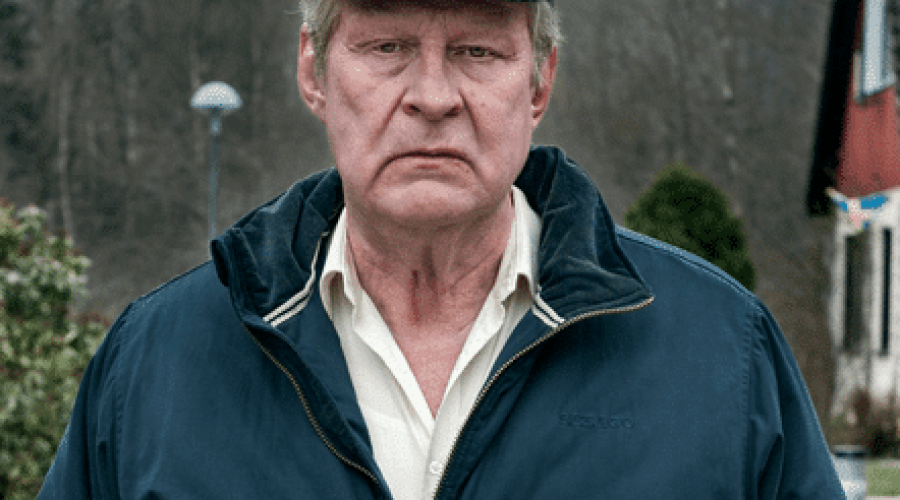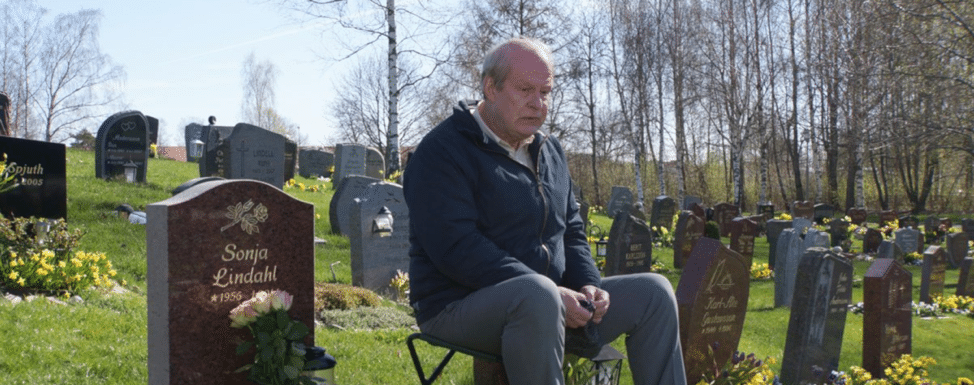Sometimes, the grumpiest people have the kindest hearts buried beneath — and sometimes, it takes a village to heal a broken soul. This is the tender and bittersweet message at the heart of A Man Called Ove, a Swedish film that beautifully captures the complexity of grief, loneliness, and unexpected friendship.
A Man Called Ove tells the story of Ove, a curmudgeonly, rigid man in his late 50s or early 60s, who lives alone following the death of his beloved wife. Ove is a man of strict routines, sharp principles, and little patience for the perceived chaos and carelessness of modern life. His days are marked by his unwavering adherence to order — he patrols his neighborhood to enforce rules, reprimands neighbors for the smallest infractions, and plans to end his life after losing the purpose that sustained him.
However, the film’s charm and depth come from the slow but profound way Ove’s tough exterior begins to crack. This transformation is sparked by the arrival of new neighbors — a lively young family with a pregnant wife and curious children — who inadvertently disrupt his solitary existence. Despite Ove’s grumbling and resistance, their persistence, kindness, and innocence slowly draw him out of his shell, forcing him to engage with the world and rediscover connection.

The narrative unfolds through a dual timeline, alternating between Ove’s present struggles and a series of flashbacks that reveal his past. These flashbacks serve as a poignant window into the origins of Ove’s character — his youthful romance with his late wife Sonja, their early life struggles, and the defining moments that shaped his ideals and grief. Through these glimpses, the audience learns about the love that gave Ove life meaning and the devastating loss that plunged him into despair.
Thematically, A Man Called Ove explores grief, loneliness, the human need for connection, and the quiet acts of kindness that can change lives. It challenges the stereotype of the bitter old man, showing instead a deeply caring individual whose grief has hardened him but not extinguished his capacity to love. The film carefully balances moments of dry humor — often through Ove’s blunt observations and gruff demeanor — with scenes of genuine warmth and vulnerability.
One of the film’s greatest strengths is its nuanced portrayal of mental health and aging. Ove’s suicidal thoughts are treated with sensitivity, showing not just despair but also the small sparks of hope that appear through human interaction. The movie does not romanticize Ove’s pain but acknowledges it honestly, portraying the struggle many face when coping with loss and isolation.

The performances are universally praised, especially the lead actor’s masterful portrayal of Ove. His ability to convey gruffness and tenderness simultaneously brings authenticity to a character who could have easily become a caricature. The supporting cast, particularly the young family who invade Ove’s life, provides a vibrant counterbalance to his stoicism, emphasizing themes of intergenerational friendship and community.
Director Hannes Holm creates a warm, intimate atmosphere that reflects the film’s emotional core. The suburban setting becomes almost a character itself — a microcosm of community where individual lives intersect in unexpected ways. The cinematography uses muted colors that shift subtly as Ove’s world brightens, mirroring his emotional journey.
Critically, A Man Called Ove was widely acclaimed. It won numerous awards and was nominated for Best Foreign Language Film at the Academy Awards, reflecting its global resonance. Viewers around the world connected with its universal themes and its portrayal of a man whose outward prickliness masks profound love and loss.
The film’s ending is both heartbreaking and hopeful. Ove finds renewed purpose not through grand gestures but through the simple, everyday connections that remind him life is worth living. This conclusion reinforces the film’s central message: healing is rarely a solitary path — it happens in community, through shared experiences, and small acts of compassion.

For viewers, A Man Called Ove offers a compelling meditation on the complexity of human emotions and the power of empathy. It asks us to look beyond first impressions and recognize the hidden struggles people carry. Ove’s story is a testament to resilience, showing that even the most seemingly hardened individuals can find light again.
Looking beyond the film, A Man Called Ove inspires reflections on how society treats the elderly and those struggling with mental health. It encourages a more compassionate, patient approach to those who appear difficult or withdrawn, reminding us that everyone has a story worth hearing.
Imagining a sequel, one could explore how Ove’s new-found community continues to grow, perhaps focusing on the next generation he influences, or how he helps others who are similarly isolated. His transformation sets a powerful example of how kindness and connection can break even the toughest walls.

In summary, A Man Called Ove is a richly layered film that combines humor, heartbreak, and humanity. It reveals the quiet strength of a man who, despite pain and loss, chooses connection over despair. It’s a film that resonates long after the credits roll — a reminder that beneath every grumpy exterior beats a heart capable of love, and that sometimes the greatest healing comes not from solitude but from opening oneself to others.
-1751536732-q80.webp)


